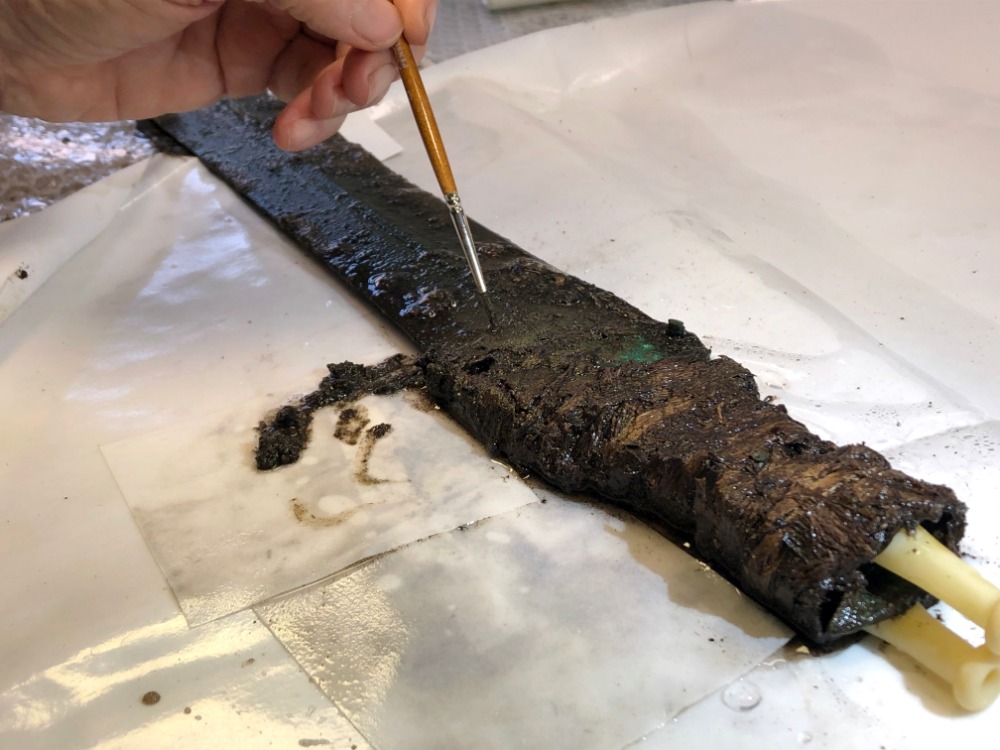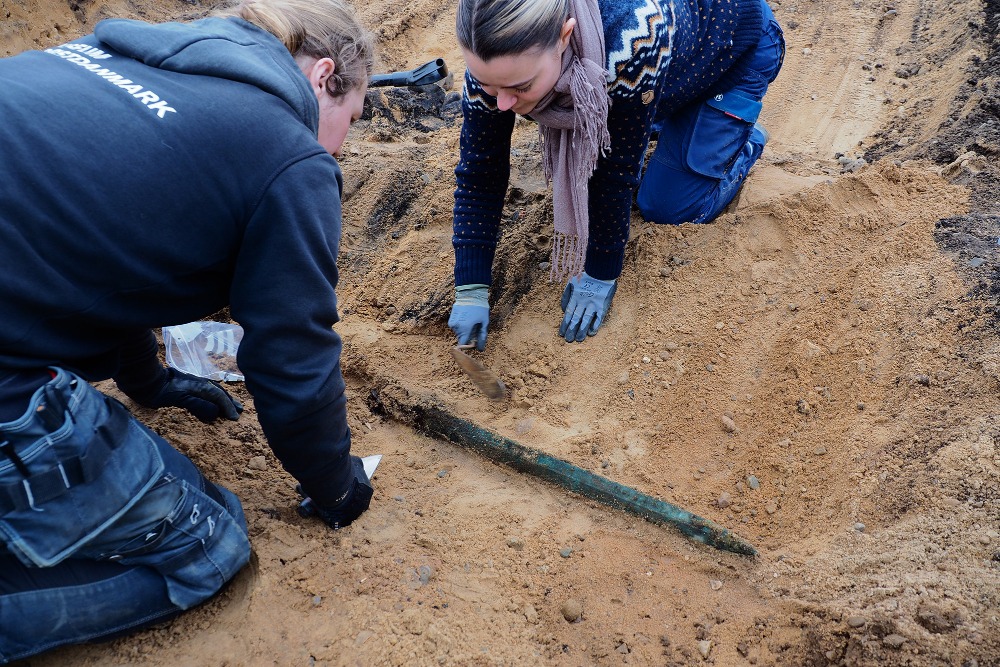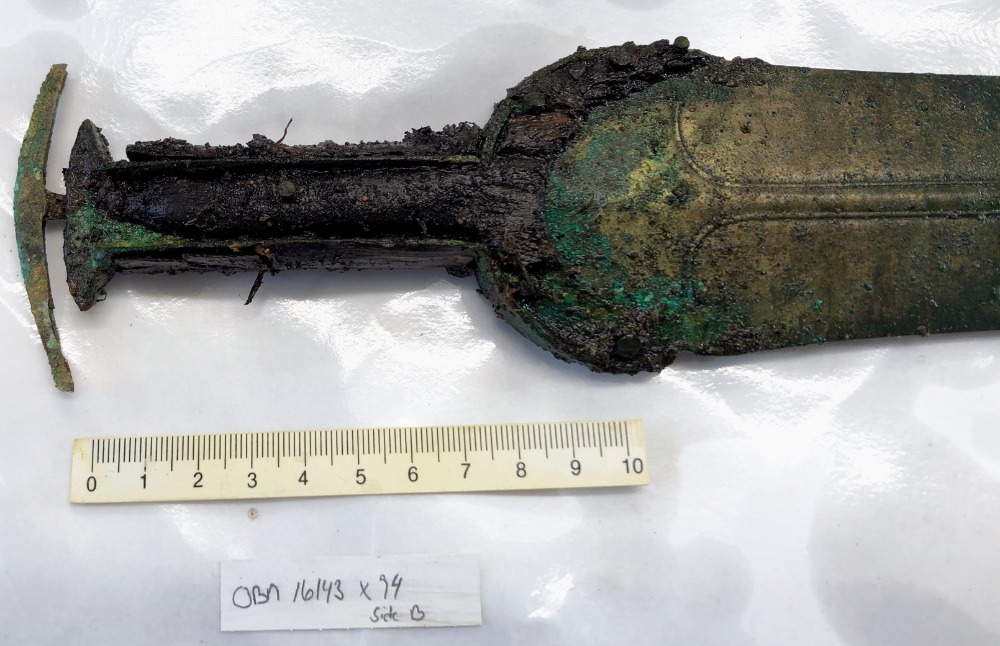Je nádherný, stále mi v zápisníčku splněných nálezů takoví chybí....kopí, dýka, srpy .. jo, ale mečů je prostě pomálu 
In Denmark, they found a very rare 3,000-year-old ceremonial sword in perfect condition
Categories: Finds and rescue research abroad , Nálezy nejenom s detektorem ve Skandinávii
Archaeologists have found a unique ceremonial sword from the Bronze Age in the village of Håre on the Danish island of Funen. It is in perfect condition, from the bronze blade to the wooden handle. Even plant fibers from the material in which the sword was originally wrapped have been preserved. The first information speaks about the origin of the material from Central Europe.
The site was discovered as part of a year-round survey of the 60-kilometer-long "Baltic Pipeline" gas pipeline. Archaeologists from the city museums in Odense were already on the last section of rescue work in western Funen, when they discovered the remains of a Bronze Age settlement and a pit in which the sword was ritually stored. According to chief archaeologist Jesper Hansen, the find is absolutely unique: “We are dealing with a 3,000-year-old miracle, because the sword dates from the Nordic Bronze Age. The very finding of a sword is a rarity, but it is also quite exceptional in that the handle made of wood and antlers is so well preserved. It is a votive gift that has been carefully wrapped and placed in a simple pit. ”
Immediately after the discovery, the perfectly preserved sword was transported to the museum laboratories, where it was subjected to careful cleaning and conservation in stable non-aggressive conditions. Due to the variety of materials used in its construction, the sword had to be divided into individual parts. Only in this way was it possible to maintain the various procedures of cleaning and preservation, which each individual part of the sword requires different. The winding of the linden bast handle was unwound, the wooden and bone parts of the antlers were separated from the metal parts. Samples were taken to identify the materials. The vegetable fibers of the sheath will be dated by the radiocarbon method to determine the exact date of manufacture of the sword.
The sword weighs 1.3 kilograms, which at the time was a considerable and very expensive amount of bronze. The handle was cast together with the sword blade and then covered with wooden parts and antlers for a comfortable grip. The metal was probably imported from Central Europe and then processed by a local blacksmith - as was customary in Denmark at the time. A sample of the bronze alloy of the sword will be tested in order to identify its exact composition and locate the source of the raw material.
After the completion of conservation work and its study, the sword will be completely assembled and presented to the public. Most likely at the Odense Møntergården Museum in the permanent exhibition of the history of Funen.
Roman Němec




The article is included in categories:
- Archive of articles > Archaeology > Finds and rescue research abroad
- Archive of articles > Archaeology > Finds and rescue research abroad > Nálezy nejenom s detektorem ve Skandinávii
Post
Krásný, u nás hrabali vodovod a našli prdlajs 
Toto je nádhera :)
Taky můj sen 
Super. Podobný se válí u Studénky, stačí ho jen vyhrabat. 
V dánsku jsem hledal už mockrát, ale tohle se mi tam teda ještě nikdy nepovedlo😄 škoda. Snad příště, jestli se ještě někdy někam v životě dostaneme
Já doufám že ano. Mám zvláštní pocit, že letos absolutně potřebuji alespoň 14 dní v Toskansku... Luka, Pama, Modena, Florencie... podvečer hledání na plážích... večer dobrý červený, sušený rajčata, šunku......  Je mi tak trochu jedno, co mi šlehnou a co budu mít v covid pasu (Tedy až na sputnik. I když zprávy ze Slovenska jsou pozitivní, morčata nechcíply... co? tak kdo ví) ale ten rok a půl bez cestování mi začíná připadat jako věčnost... našim dětem s toho vyloženě hrabe. Jsou lidi kterým to nevadí, ale pro mě je volnost bohybu zcela zásadně propojená s pocitem svobody, který mi tak nějak poslední dobou schází....
Je mi tak trochu jedno, co mi šlehnou a co budu mít v covid pasu (Tedy až na sputnik. I když zprávy ze Slovenska jsou pozitivní, morčata nechcíply... co? tak kdo ví) ale ten rok a půl bez cestování mi začíná připadat jako věčnost... našim dětem s toho vyloženě hrabe. Jsou lidi kterým to nevadí, ale pro mě je volnost bohybu zcela zásadně propojená s pocitem svobody, který mi tak nějak poslední dobou schází....
nemám slov, prostě nádhera 
Todle najít nesou mě nohama napřed 
















